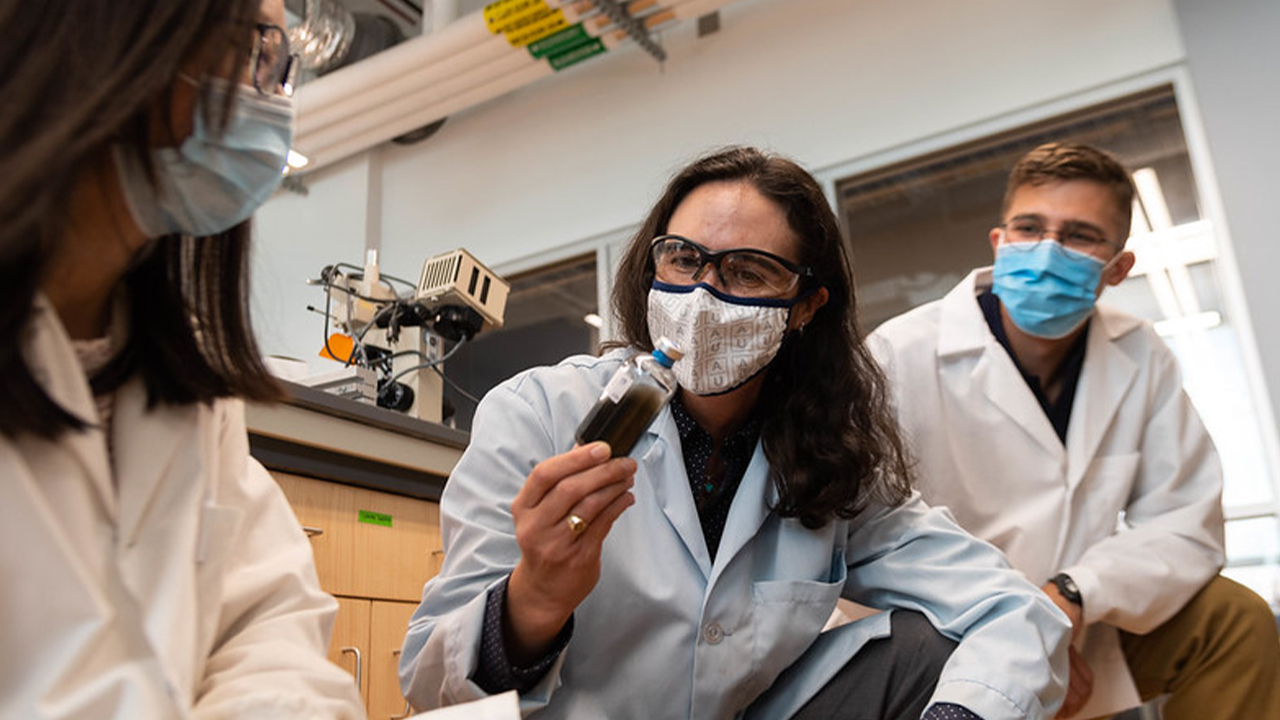Civil and Environmental professor receives $1.3 million grant from DoD
Published: Oct 28, 2020 12:00 AM
By Alyssa Turner
Natalie Cápiro, assistant professor of civil and environmental engineering, has been awarded a $1.3 million grant by the Strategic Environmental Research and Development Program (SERDP) for her project “Development of Predictive Tools for Assessment of Natural Attenuation Capacity and Treatment Transition at Chlorinated Solvent Sites.”
SERDP is an environmental science and technology program for Department of Defense (DoD), that is planned and executed in partnership with Department of Energy and U.S. Environmental Protection Agency, with participation by numerous other federal and non-federal organizations.
Cápiro’s project aims to develop a quantitative understanding of the relationships between the processes that govern long-term attenuation at contaminated sites that are characterized by complex hydrogeology and failure of prior remediation efforts.
According to Cápiro, current nationwide estimates of costs and predicted cleanup times required for the restoration of federal and state hazardous waste-impacted groundwater sites are underestimated. The cleanup timeframe for sites with complex hydrogeology can exceed acceptable timeframes, which are typically considered to be 30-50 years.
“Particularly difficult are sites contaminated with highly toxic chlorinated solvents that have been widely used as degreasers at military bases, dry cleaners and in other industries,” Cápiro explained. “Groundwater resources at more than 126,000 known contaminated federal and state hazardous waste sites are estimated to require more than $100 billion to achieve cleanup goals.”
Cápiro’s work aims to develop a holistic remediation approach accounting for natural attenuation processes that control chlorinated solvent contaminant persistence in groundwater, while providing long-term cost-saving measures and safeguarding drinking-water supplies.
The research will establish a more complete understanding of the relationships between the coupled processes that govern long-term natural attenuation of chlorinated solvent groundwater plumes. Also, it will provide site managers, regulatory officials and the scientific community with mathematical models and predictive tools that are capable of estimating the capacity of an aquifer to naturally attenuate chlorinated solvents in complex hydrogeological settings.
The outcomes of the project will aid in the selection of scientifically sound strategies for sustainable long-term management of complex, contaminated sites and support the recommendations on when the transition from active to passive treatment is justified.
Cápiro’s co-PIs are Kurt Pennell (Brown University) and Mark Widdowson (Virginia Tech), as well as Michael Kavanaugh and Eric Suchomel, both with Geosyntec Consultants.
Media Contact: , jdh0123@auburn.edu, 334-844-3591
Natalie Cápiro

